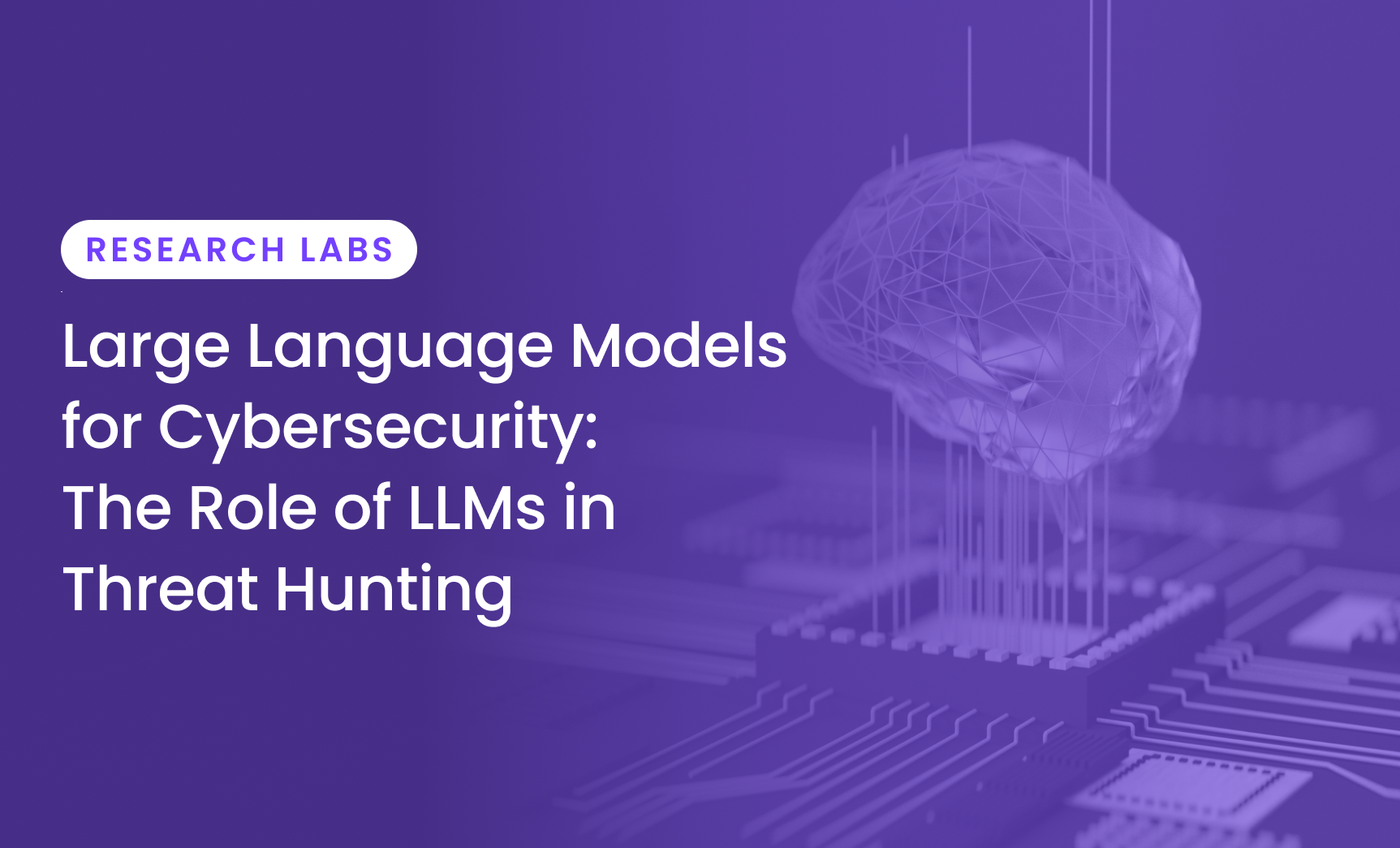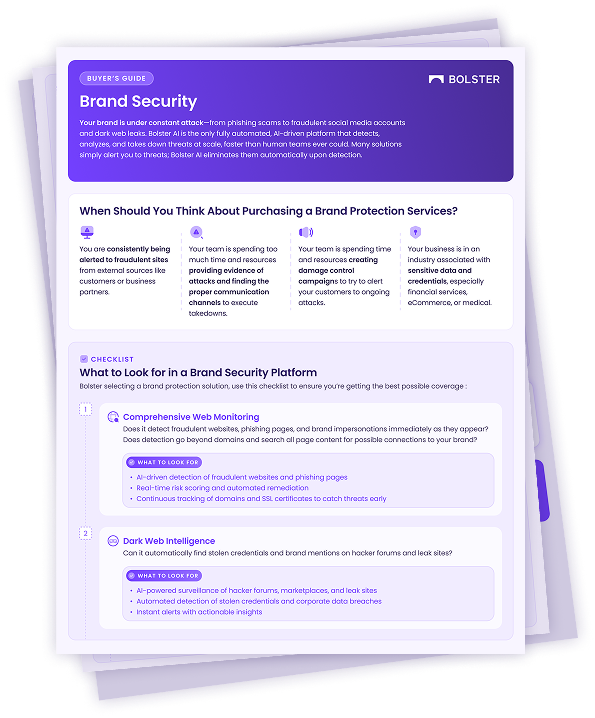Organizations are turning to artificial intelligence (AI) and, more specifically, large language models (LLMs) to bolster their cybersecurity and threat intelligence capabilities.
Large language models, such as GPT-4 and BERT, are advanced AI systems that use deep learning to analyze and generate human-like text. Trained on massive datasets, they can produce contextually relevant language and recognize complex patterns, making them useful for cybersecurity applications.

Understanding the Threat Landscape
Cybercriminals rely on tactics such as phishing, ransomware, and social engineering to breach systems. Threat intelligence (the process of gathering and analyzing data about these tactics) helps organizations detect indicators of compromise (IOCs), understand attacker behavior, and anticipate future attacks. The challenge lies in the sheer data volume, which can overwhelm human analysts.
Threat Detection and Prevention
- Phishing Detection: LLMs can identify phishing emails by analyzing grammar, urgency cues, sender metadata, embedded links, and even image content. They can also extend this detection to other channels like SMS (smishing) and social media by analyzing message content and account behavior.

- Malware Analysis: By processing large volumes of malware code, LLMs can learn to identify malicious patterns and classify malware based on its behavior. This can help organizations detect and respond to new threats more quickly.
- Anomaly Detection: LLMs can analyze network traffic and system logs to identify unusual patterns that may indicate a cyberattack. This can help organizations detect threats early and prevent data breaches
LLMs can also support detection of fraud, misinformation, and suspicious crypto transactions, extending their value beyond conventional threat types.

Examples of LLMs’ Role in Cybersecurity
- BERT Enhancing Threat Intelligence: Google’s BERT model significantly boosted threat detection accuracy, improving it by 30% in a detailed study. This improvement directly contributed to more precise identification and faster mitigation of potential cyber threats.
- GPT-4 Automating Incident Response: According to a report, integrating OpenAI’s GPT-4 into incident response workflows reduced response times by up to 20%—50%. GPT-4’s ability to generate human-like responses streamlined the incident resolution process, enabling quicker and more efficient handling of emerging threats.
Threat Intelligence Enrichment
- Open-Source Intelligence (OSINT) Analysis: LLMs can extract valuable information from open sources such as social media, news articles, and forums. This can help organizations stay informed about emerging threats and competitor activities.
- Report Generation: LLMs can generate comprehensive threat intelligence reports, summarizing key findings and providing actionable insights. This can save analysts time and improve the efficiency of the threat intelligence process.
- Incident Response: By analyzing incident reports and historical data, LLMs can help identify root causes and recommend mitigation strategies. For example, AI models have been used to review phishing URLs and extract common attack patterns to inform defensive tactics.

Threat Hunting
- Hypothesis Generation: LLMs can generate hypotheses about potential threats based on available data. This can help analysts prioritize their investigations and focus on high-impact threats.
- Automated Threat Hunting: LLMs can automate routine threat-hunting tasks, such as searching for specific IOCs or analyzing network traffic for suspicious activity. This frees up analysts to focus on more complex investigations.

Challenges and Considerations
While LLMs offer significant potential benefits for threat intelligence, it’s important to be aware of the challenges and limitations. These include:
- Data Quality: The quality of the data used to train LLMs is crucial. Biased or inaccurate data can lead to unreliable results.
-
Model Bias: LLMs can inherit biases from the data they are trained on, which can impact their ability to detect certain types of threats.
-
Explainability: LLMs are often considered black boxes, making it difficult to understand how they arrive at their conclusions. This can be a challenge for regulatory compliance and trust building.
-
False Positives and Negatives: LLMs may generate false positives or negatives, which can lead to wasted resources or missed threats.
- Regulatory and Legal Risk: Misuse of LLMs, failure to anonymize data, or reliance on biased models can create liability under privacy and cybersecurity law. Adhere to regulations (e.g., GDPR, CCPA) to mitigate risk.
-
Data Anonymization: Employ techniques to remove personally identifiable information from training data.
-
Secure Data Handling: Implement robust security measures to protect sensitive data during processing and storage.
- Multilingual Training: Expose the model to phishing emails in multiple languages to improve its effectiveness across different regions.
-
Translation Integration: Machine translation tools are used to translate emails from foreign languages for analysis.
-
Real-time Adaptation: Implement mechanisms for the model to learn from new phishing trends as they emerge.
-
Threat Intelligence Integration: Incorporate external threat intelligence feeds to stay updated on the latest tactics.
-
Explainable AI: While complex, efforts to make LLM decisions more transparent can enhance trust and accountability.
-
Ethical Implications: Consider the potential biases in training data and model outputs to avoid discriminatory outcomes.
-
User Education: Complement LLM-based protection with user awareness training to empower individuals to recognize phishing attempts.
By addressing these challenges, organizations can effectively leverage LLMs to build robust phishing defence systems.
The Role Ahead for LLMs in Cybersecurity
As cyber threats evolve, so will the use of LLMs. Their ability to analyze large volumes of data, detect patterns, and adapt to emerging risks will make them a core part of modern security operations. But their effectiveness depends on quality data, human oversight, and responsible deployment that complies with industry standards and law. When combined with experienced analysts, LLMs can significantly enhance detection, response, and prevention.





